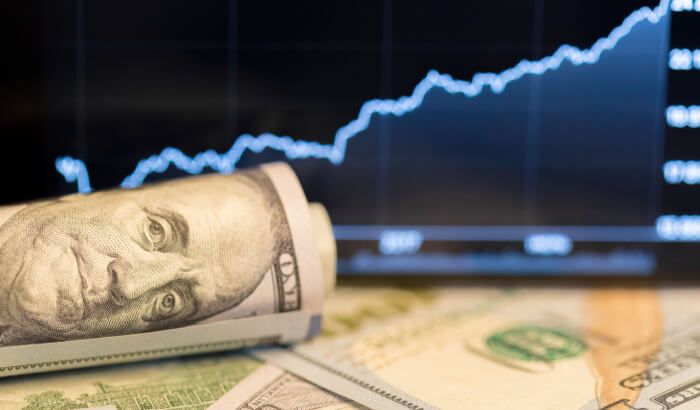Wednesday Oct 4 2023 14:51

10 min

The U.S. dollar index expanded its gains to hit 107.2 on Wednesday, reaching its highest point since November.
This upward trend is in line with rising U.S. Treasury yields and is driven by the persistent hawkish comments made by officials from Federal Reserve (Fed) — the U.S. central bank. These comments continue to reinforce the expectation that interest rates will remain elevated in the near future — a policy stance that is now widely referred to as “higher for longer”.
As highlighted by Markets.com Chief Market Analyst Neil Wilson in an overview on Wednesday, a range of Fed officials have issued comments in recent days.
Loretta Mester of the Cleveland Fed went for higher:
Fed vice chair Michael Barr stressed longer:
Fed governor Michelle Bowman couldn’t decide and pushed for both higher and longer:
U.S. economic indicators have consistently indicated the resilience of the country’s economy. The JOLTS report revealed a higher-than-expected number of job openings last month, while the ISM Manufacturing PMI for September indicated the smallest contraction in factory activity in nearly a year.
Investors are eagerly awaiting the upcoming payrolls report and will be closely monitoring further remarks from Federal Reserve officials in the days ahead.
The dollar has strengthened against all major currencies, with the most notable appreciation observed against the Australian dollar (AUD/USD) following the Reserve Bank of Australia's decision to keep interest rates unchanged on Tuesday. The greenback has also gained ground against the Japanese yen (USD/JPY), the British pound (GBP/USD), and the euro (EUR/USD) in recent days, although some of those gains briefly scaled back on Wednesday.
On Wednesday, ING’s Global Head of Markets Chris Turner wrote the dollar index could be headed for the 108 mark in his dollar forecast, as there is “little reason” to sell the greenback at present, according to the economist:
Scotiabank Chief Currency Strategist Shaun Osborne’s USD forecast, issued on October 3 and cited by the FXStreet Insights Team, was similar to the view expressed by ING’s Turner:
On October 2, analysts at Societe Generale wrote that the U.S. dollar index could return to 108 provided it broke past the 106.80 level:
Economists at Charles Schwab said the dollar index was unlikely to continue on its upward trajectory, unless the Fed shifted its hawkish stance and signaled the end of its tightening cycle:
In their latest FX Snapshot on October 3, analysts at Citibank Hong Kong were bearish in their dollar forecast, saying the current levels of the U.S. dollar index were a “likely overshoot”, given the Fed’s likely upcoming slowdown in 2024:
Citi’s 3-month USD forecast was bearish placing the DXY index at a potential average of 104.17. The 6-to-12-month forecast was slightly bullish, suggesting that the DXY could rise to 104.48, according to the bank.
The bank's long-term projection for DXY was bearish, projecting the pair to recover and trade at a potential average of 93.48.
At the time of writing, DXY was trading around the 106.65 mark, down 0.37% on the day after hitting the 107.2 mark in early trading.
Dollar dynamics were mixed in other pairs, as EUR/USD was trading at $1.0529 (up 0.6%), USD/JPY fell by 0.1% and traded below the crucial 150 mark at 148.8, while the pound to dollar rate (GBP/USD) rose by 0.8% to trade at $1.2175.
When considering foreign currency (forex) for trading and price predictions, remember that trading CFDs involves a significant degree of risk and could result in capital loss. Past performance is not indicative of any future results. This information is provided for informative purposes only and should not be construed to be investment advice.